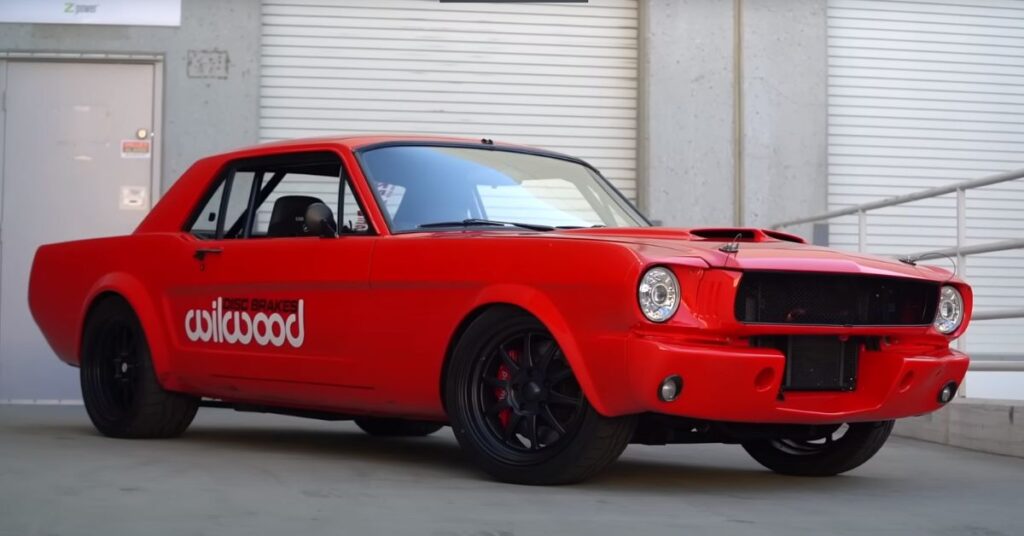Wilwood Brakes, one of the leading manufacturers of high-performance disc brake systems, has built a ’66 Mustang Pro-Touring test mule that boasts impressive power, speed, and agility. This test mule is powered by a Ford Coyote engine that produces an astounding 435 horsepower, which is channeled through a TCI chassis, making it an ideal platform for testing Wilwood’s cutting-edge brake systems.
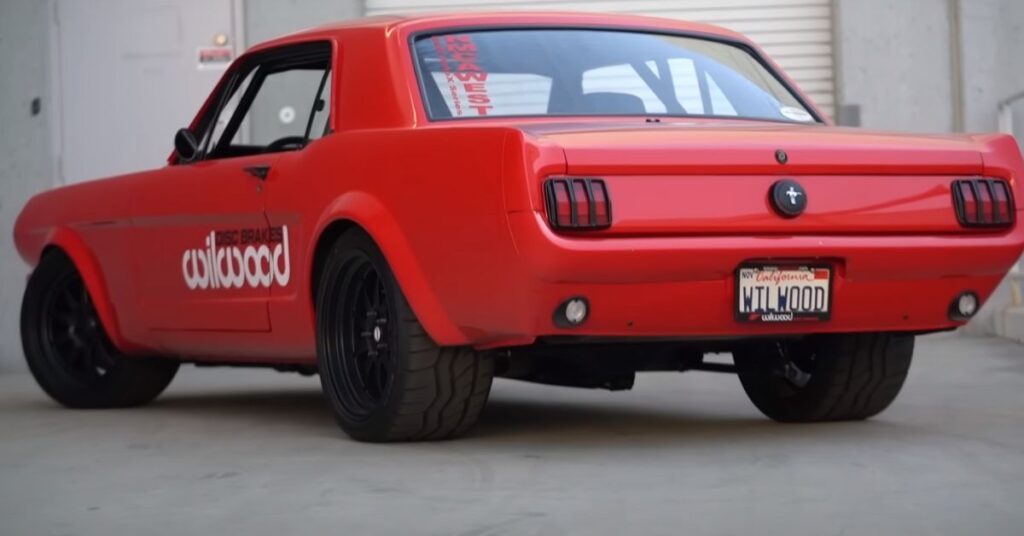
Introduction
The Wilwood Brakes Coyote Swapped ’66 Mustang Pro-Touring Test Mule is a prime example of how modern technology can be used to enhance the performance of classic muscle cars. In this article, we will take a closer look at the history and specifications of this stunning test mule, as well as the cutting-edge brake systems that it was built to test.
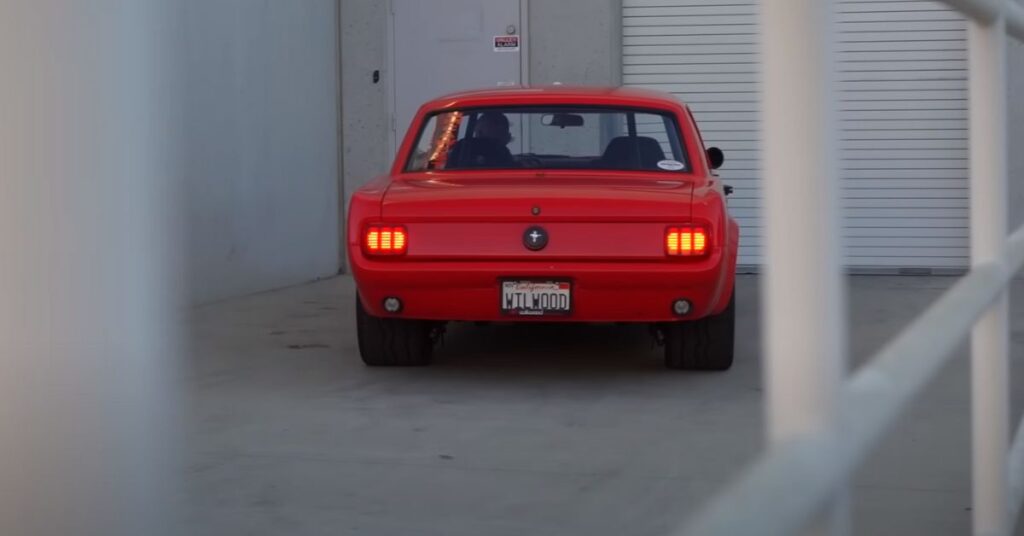
The History of the Wilwood Brakes Coyote Swapped ’66 Mustang Pro-Touring Test Mule
The Mustang was originally built in 1966 as a T-Code car, meaning it was equipped with a straight-six engine and four-lug wheels, making it the ideal candidate for a Coyote engine swap. The Coyote engine is a 5.0L V8 engine that was introduced in 2011 and has become a popular choice for high-performance builds due to its impressive power output and reliability.
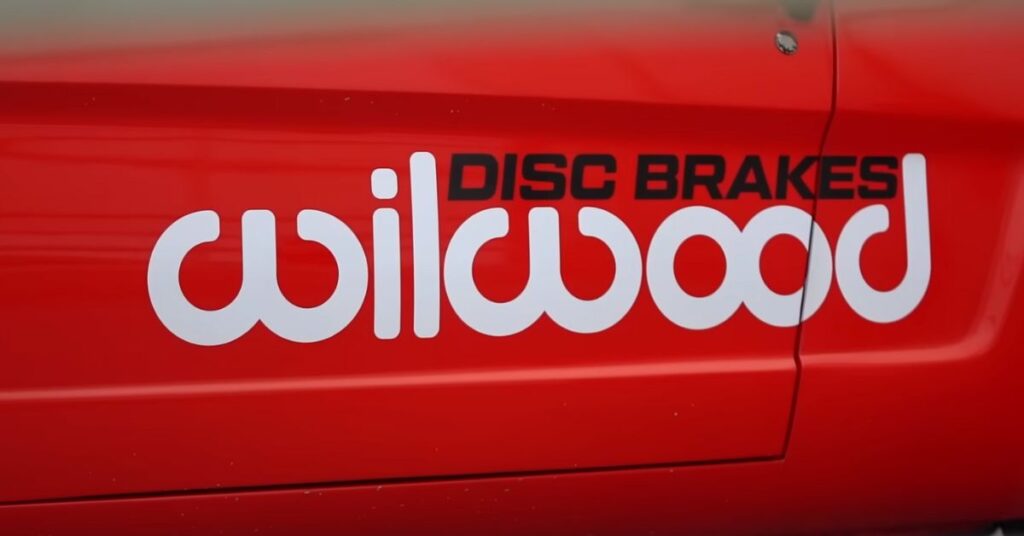
The Build Process
For this Mustang build, the Coyote engine was acquired from a salvage vehicle that had remarkably low mileage, with just 7,500 miles on the clock. Opting to retain the factory transmission, the team made a wise decision to utilize the original drivetrain components. However, accommodating the larger engine necessitated the removal of the shock towers to create sufficient space within the engine bay. This modification allowed for proper fitment and clearance of the powerplant, ensuring optimal performance.
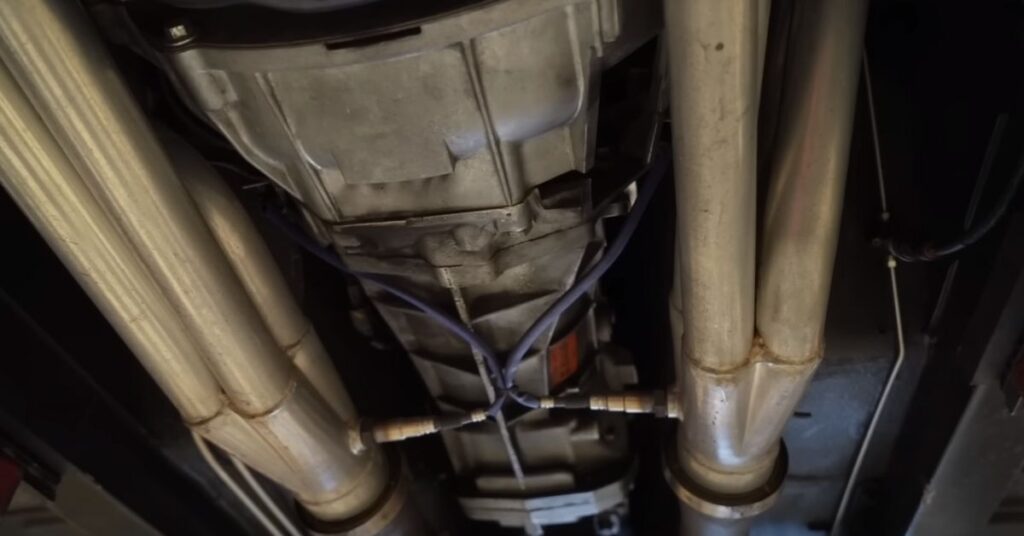
To provide a solid and reliable foundation for the Mustang, a TCI chassis was expertly installed. The TCI chassis not only offers enhanced structural rigidity but also improves overall handling and responsiveness. With the upgraded chassis in place, the Mustang benefits from improved stability and control, allowing the driver to fully harness the power of the Coyote engine.
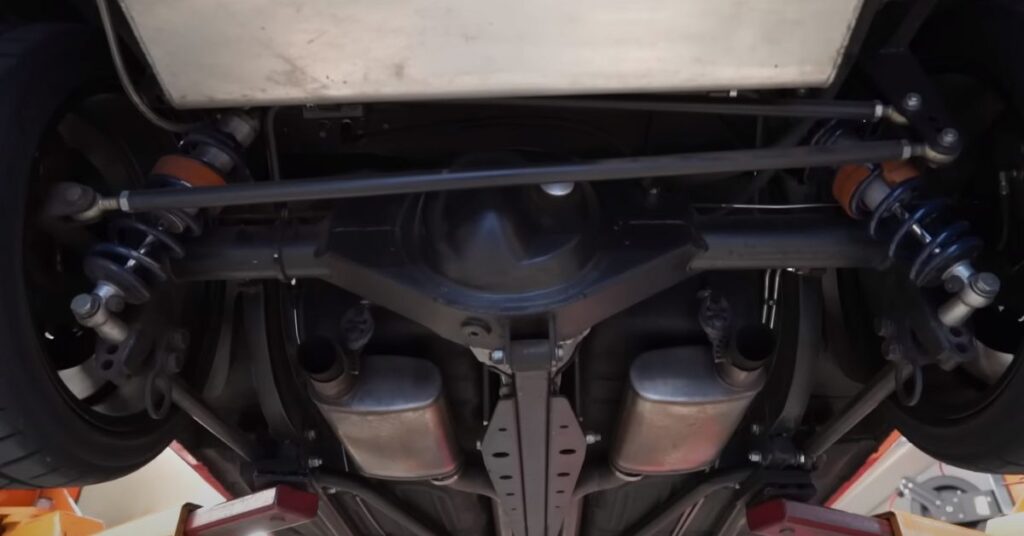
The careful selection of the Coyote engine from a low-mileage donor vehicle, combined with the retention of the factory transmission and the installation of a TCI chassis, showcases a thoughtful approach to this Mustang build. By combining these elements, the team has created a high-performance machine that offers both power and stability. This comprehensive approach ensures that the Mustang not only delivers impressive acceleration and performance but also handles with precision and control.
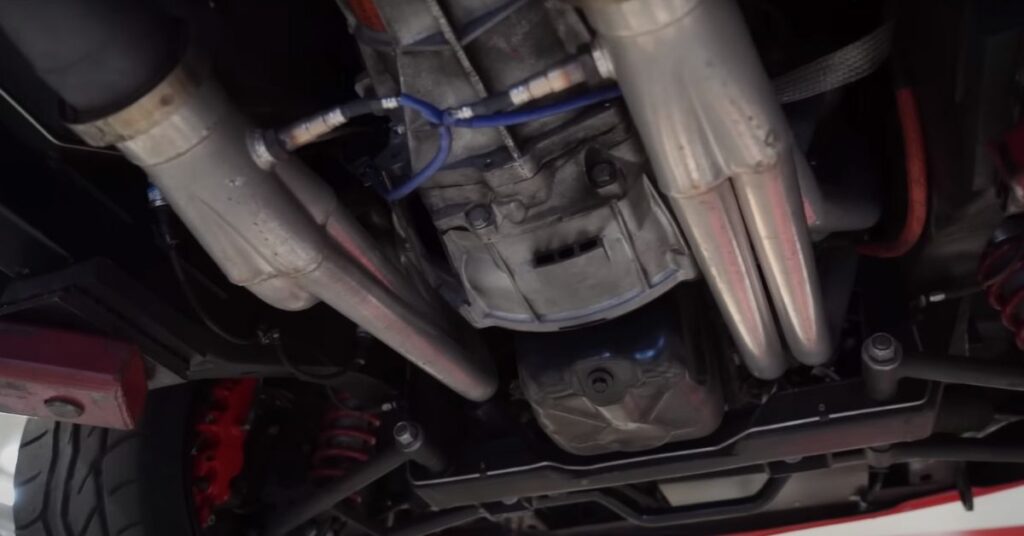
The TCI chassis provides several benefits, including improved handling, better weight distribution, and a lower center of gravity. The chassis also allowed for the installation of a modern suspension system, including Ride Tech shocks and flares from Meyer Racing.
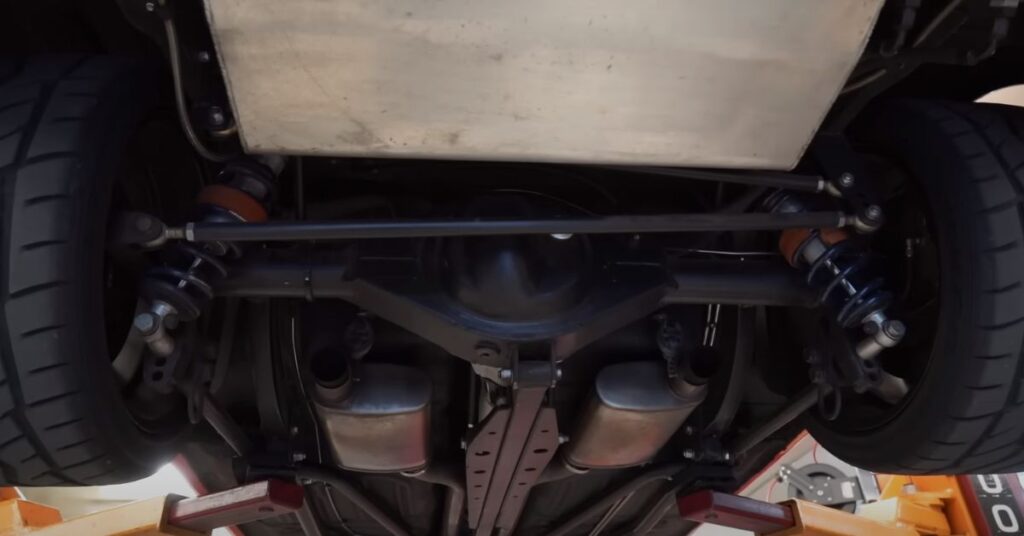
The Braking System
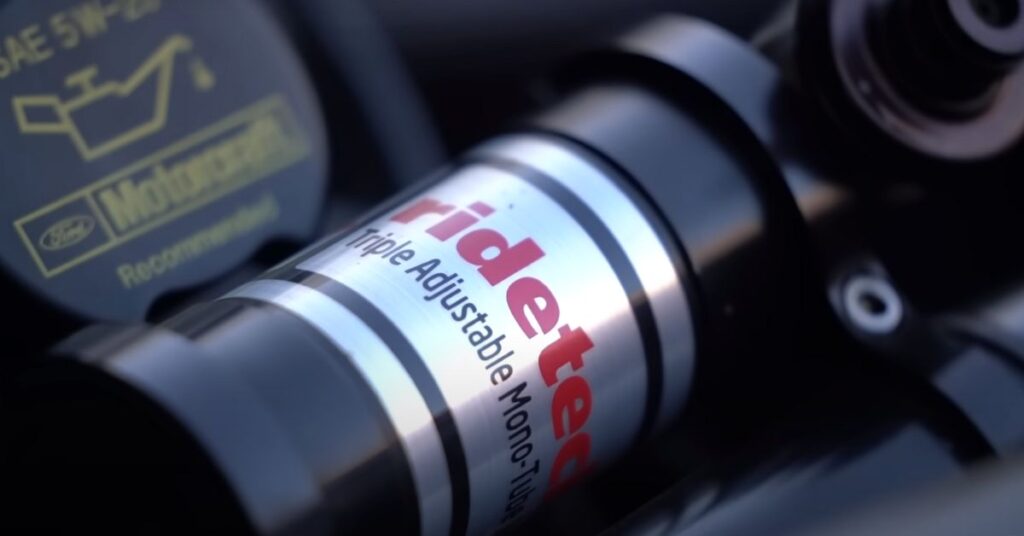
The Wilwood Brakes Coyote Swapped ’66 Mustang Pro-Touring Test Mule was built to test Wilwood’s high-performance brake systems. The braking system on this car includes Wilwood’s Forged Dynalite Pro Series front and rear disc brake kits.
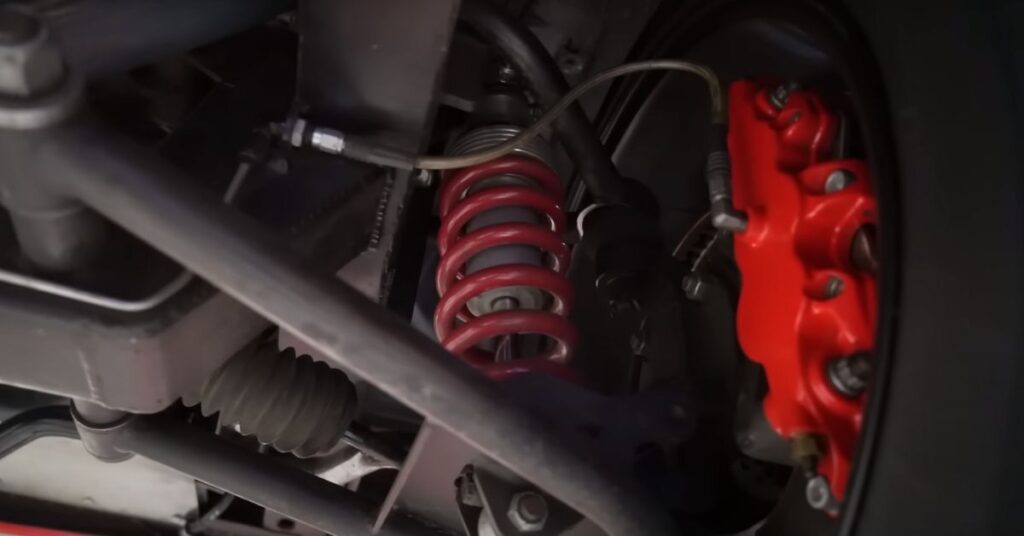
The Forged Dynalite Pro Series brake kits feature forged billet four-piston calipers, slotted rotors, and high-performance brake pads, making them ideal for high-performance driving. The brake system is also fully adjustable, allowing for precise tuning to suit a variety of driving conditions.
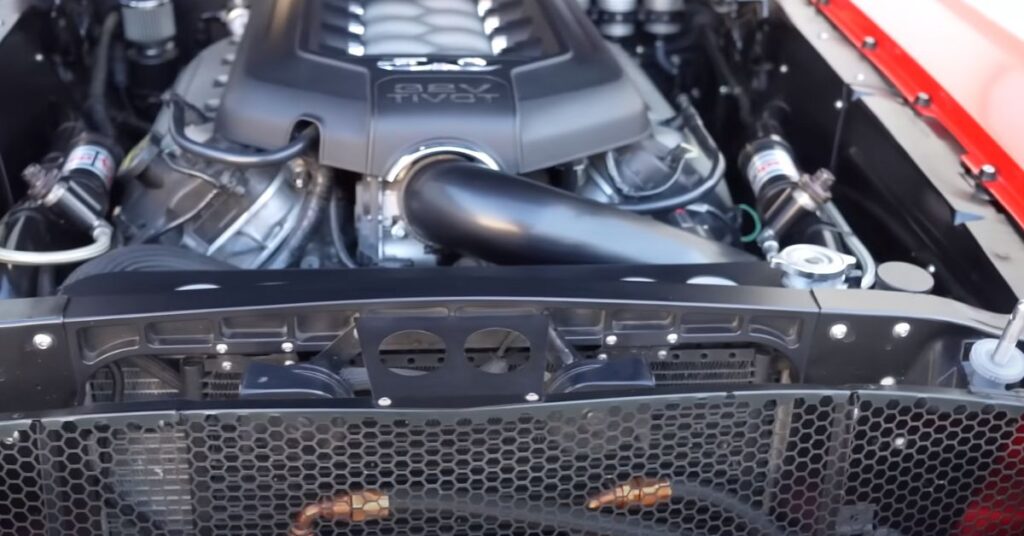
The Interior and Exterior
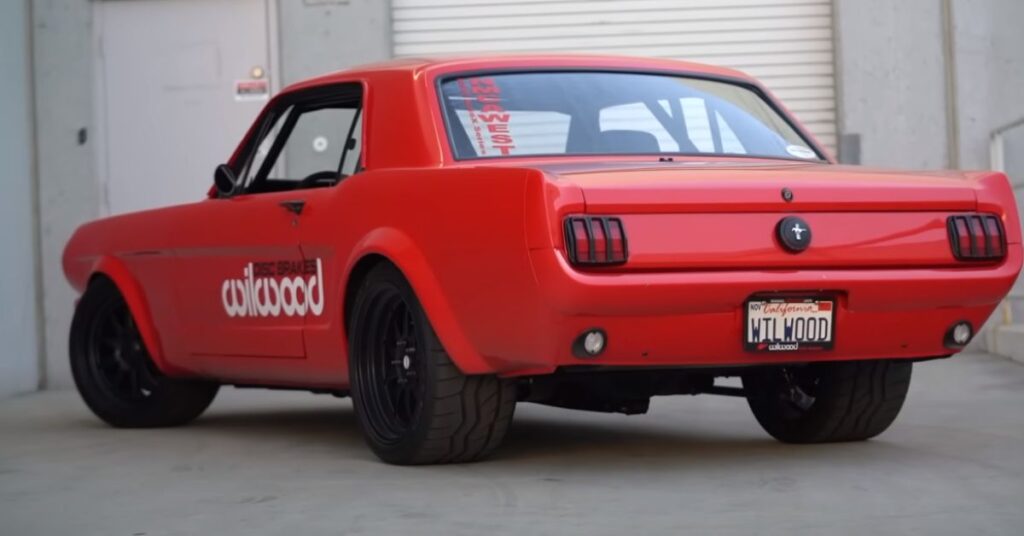
The interior of this Mustang has undergone significant modifications, featuring a full roll cage that enhances both safety and structural integrity. In line with the owner’s vision, Bill Wood, the interior maintains a clean and straightforward design reminiscent of classic Mustangs. The focus was on simplicity, allowing the car’s performance and aesthetics to take center stage. With the fully caged interior, drivers and passengers can enjoy added protection and peace of mind while pushing the Mustang to its limits.
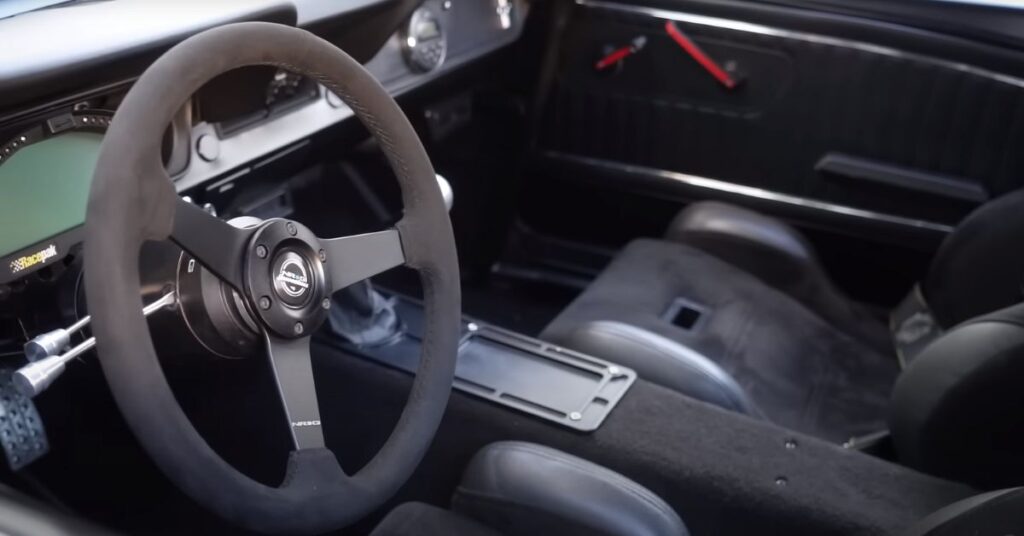
On the exterior, notable changes have been made to accommodate larger wheels and tires, contributing to the car’s enhanced performance and aggressive stance. Up front, a Meyer Racing front end with a two-inch flare has been installed, providing both functional benefits and an eye-catching appearance. The widened front end not only allows for larger wheels but also improves aerodynamics and stability at higher speeds. At the rear, the Mustang has been tubbed, meaning that the wheel wells have been modified to accommodate larger tires. This modification ensures optimal traction and grip, particularly during acceleration and high-performance maneuvers.
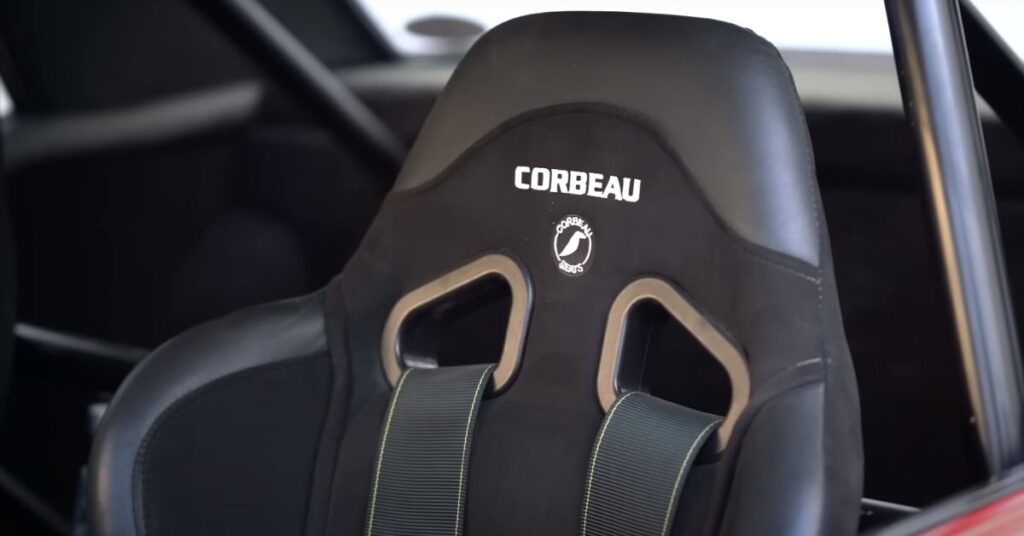
With a carefully crafted interior and modified exterior, this Mustang embodies a perfect blend of style and performance. The clean and simple interior design pays homage to the classic Mustangs of yesteryear, while the exterior modifications provide the necessary room for larger wheels and tires, enhancing both aesthetics and functionality. This comprehensive approach to customization ensures that the Mustang not only looks impressive but also performs at its best, delivering an exhilarating driving experience that captures the essence of this iconic American muscle car.
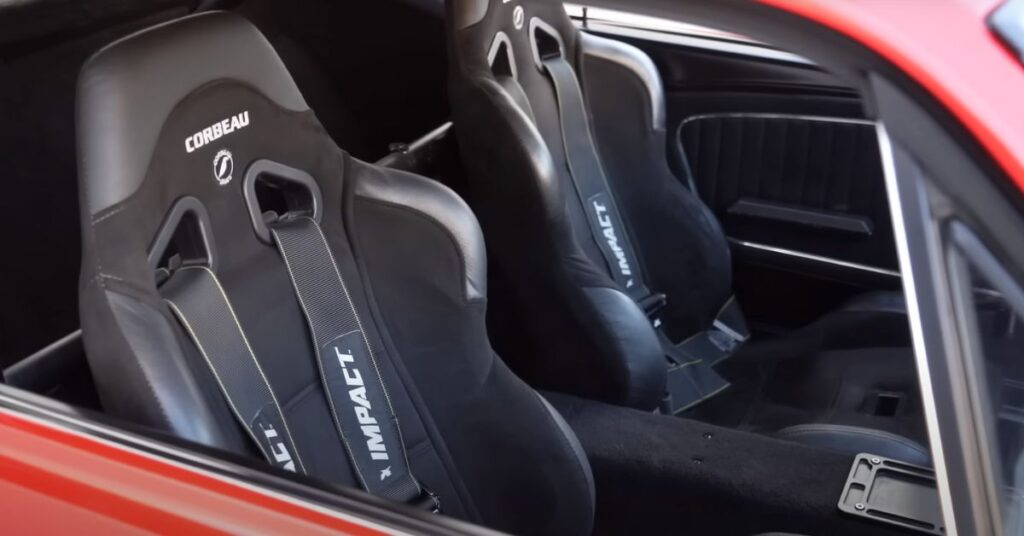
Conclusion
The Wilwood Brakes Coyote Swapped ’66 Mustang Pro-Touring Test Mule is an impressive example of how modern technology can be used to enhance the performance of classic muscle cars. The Coyote engine, TCI chassis, and Wilwood brake systems all work together to create a car that is powerful, agile, and reliable.

